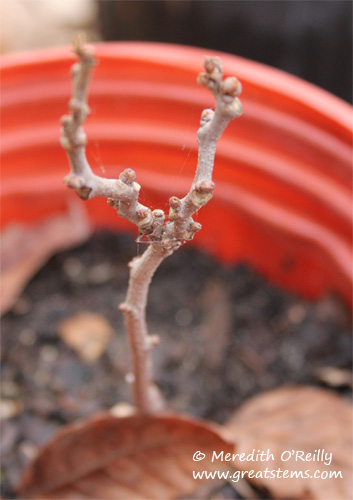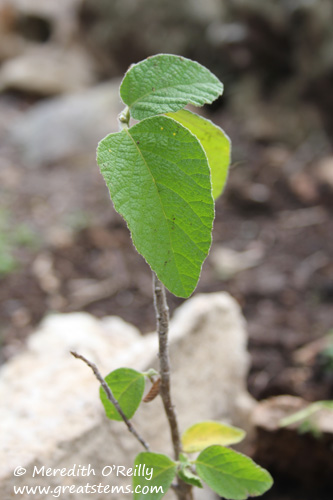At long last I’ve found a Praying Mantis in my garden. My sons tell me they’ve seen others, but this is the first I’ve personally encountered in the yard and likewise documented. Nothing counts until I get a picture of it, even if others have been around for years!
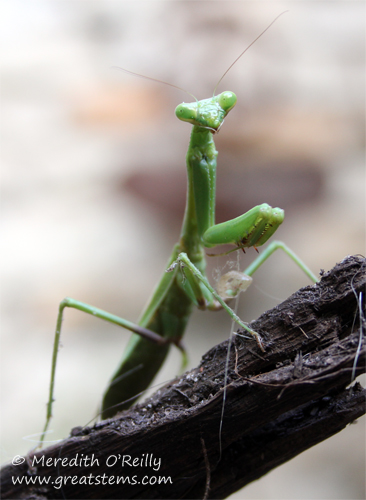 Praying Mantises are notorious for being fierce predators — cannibalistic ones at that. Beware the nearby sibling or mate — it might become a fast snack. If you are in the mood for horror this Halloween, explore the many images of Praying Mantises offered at Environmental Graffiti. They gave even me the willies.
Praying Mantises are notorious for being fierce predators — cannibalistic ones at that. Beware the nearby sibling or mate — it might become a fast snack. If you are in the mood for horror this Halloween, explore the many images of Praying Mantises offered at Environmental Graffiti. They gave even me the willies.
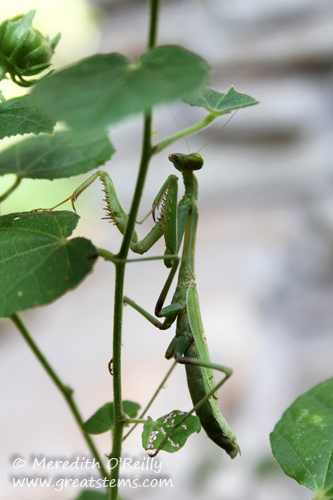 Praying Mantises really should be as iconic as pumpkins, spiders, zombies, and ghosts when it comes to Halloween. They are fast and sneaky and downright horrific in their voraciousness, the way they pierce and decapitate their prey and gnaw on body parts. And FYI, I draw the line at letting one near my hummingbird feeders.
Praying Mantises really should be as iconic as pumpkins, spiders, zombies, and ghosts when it comes to Halloween. They are fast and sneaky and downright horrific in their voraciousness, the way they pierce and decapitate their prey and gnaw on body parts. And FYI, I draw the line at letting one near my hummingbird feeders.
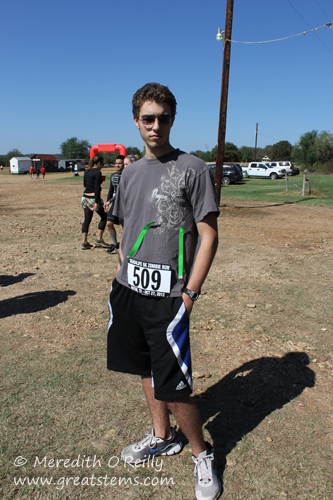 Here’s another predator, this one in our family. Much like a Praying Mantis, he eats everything, though unlike the insect version, he has yet to eat his sibling. In this photo he’s about to bravely enter a zombie fallout zone…
Here’s another predator, this one in our family. Much like a Praying Mantis, he eats everything, though unlike the insect version, he has yet to eat his sibling. In this photo he’s about to bravely enter a zombie fallout zone…
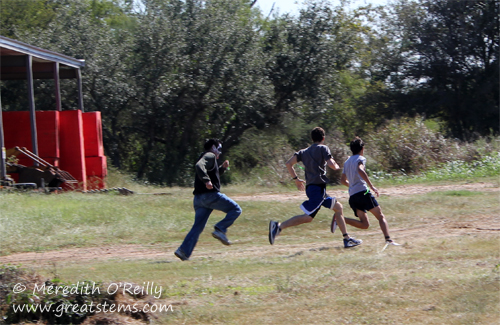 where lurking zombies chased him over haystacks, through mud pits, and across ponds as he ran for his life. Thankfully he did not become a zombie himself, arriving to safety with life intact. Good thing he was well fueled ahead of time, eating as much as he does.
where lurking zombies chased him over haystacks, through mud pits, and across ponds as he ran for his life. Thankfully he did not become a zombie himself, arriving to safety with life intact. Good thing he was well fueled ahead of time, eating as much as he does.
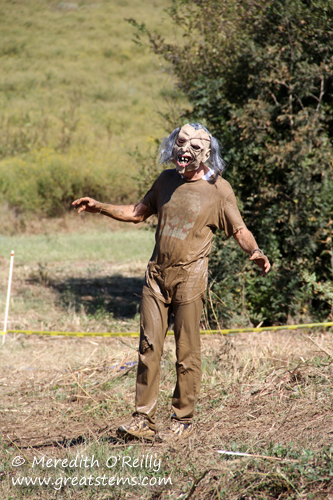 Zombies, as you know, will accept a variety of body parts, but they show a particular preference for brains. Point being, my son eats everything, but Zombies don’t.
Zombies, as you know, will accept a variety of body parts, but they show a particular preference for brains. Point being, my son eats everything, but Zombies don’t.
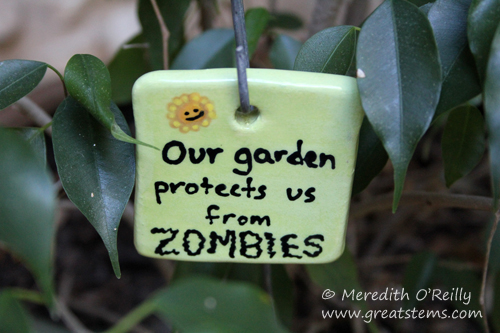 Here at home, our garden protects us from Zombies, and we have a sign to prove it. But every once in a while a Zombie might sneak past….
Here at home, our garden protects us from Zombies, and we have a sign to prove it. But every once in a while a Zombie might sneak past….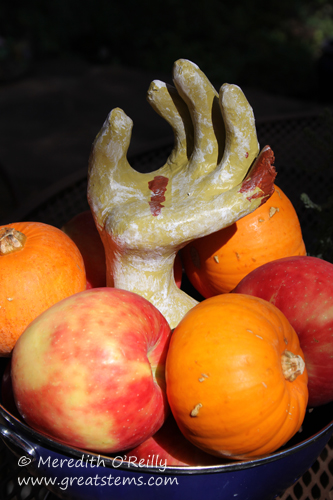
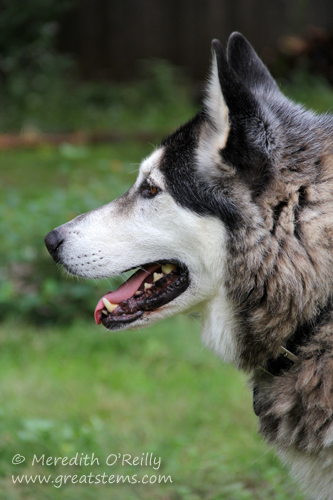 This is the predator who ate the finger off the Zombie hand that lurked in our fruit bowl. Now it’s even more of a Zombie hand.
This is the predator who ate the finger off the Zombie hand that lurked in our fruit bowl. Now it’s even more of a Zombie hand.
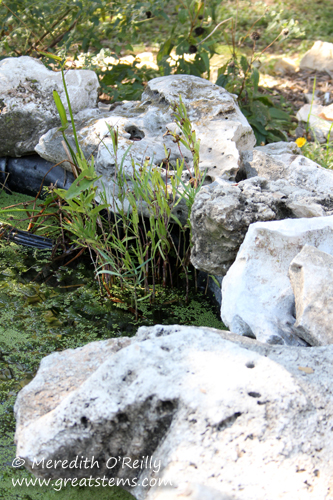 In this pond lurks the Unknown Predator, the creature that ducks just out of sight every time I try to catch a glimpse, no matter how stealthily I approach. It just rustles plants to show me it’s there, flaunting the fact that it is sneakier than I am. It’s not the Creature from the Black Lagoon, though — I retain that status. Perhaps it’s the Swamp Monster, or Nessie, or Godzilla. Or Jaws.
In this pond lurks the Unknown Predator, the creature that ducks just out of sight every time I try to catch a glimpse, no matter how stealthily I approach. It just rustles plants to show me it’s there, flaunting the fact that it is sneakier than I am. It’s not the Creature from the Black Lagoon, though — I retain that status. Perhaps it’s the Swamp Monster, or Nessie, or Godzilla. Or Jaws.
How about a nice creepy spider image for Halloween?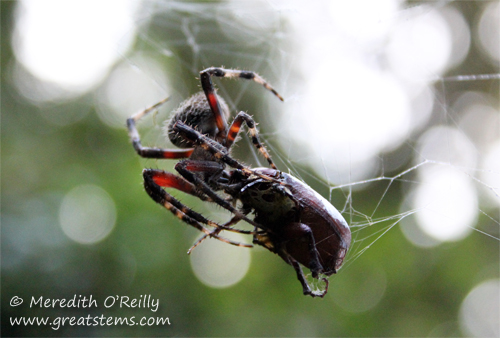
I almost walked right into that feast. I ducked just in time.
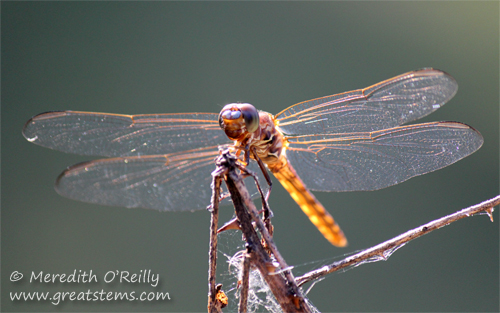
At least Dragonflies always look like they are smiling at you. Just before they eat you.
Happy Halloween, garden predators, zombies, and everyone else!
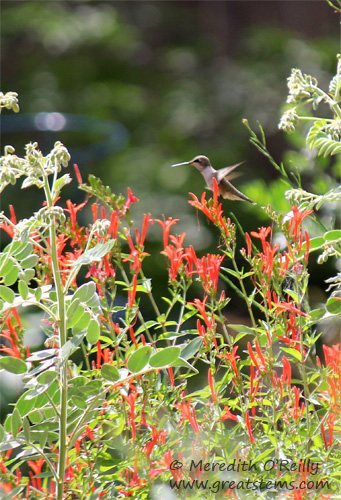
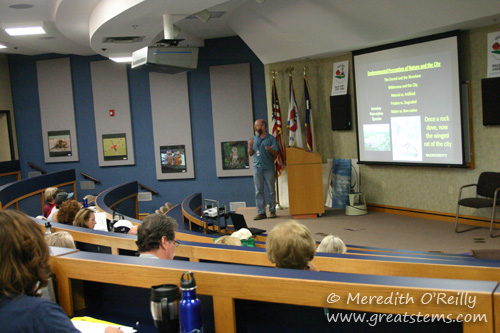 Habitat Stewards are volunteers. We have fun giving back to the community — helping create or restore habitat, playing in the dirt to prep beds and plant, teaching kids and adults about wildlife and native plants, and more. It’s incredibly rewarding, and our birds and butterflies are most grateful!
Habitat Stewards are volunteers. We have fun giving back to the community — helping create or restore habitat, playing in the dirt to prep beds and plant, teaching kids and adults about wildlife and native plants, and more. It’s incredibly rewarding, and our birds and butterflies are most grateful!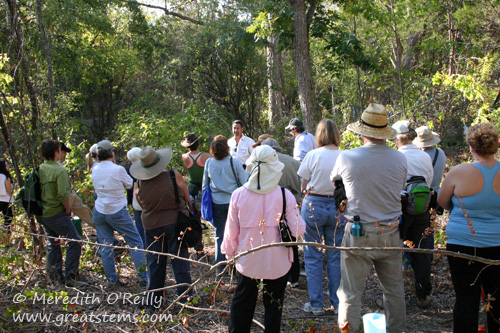
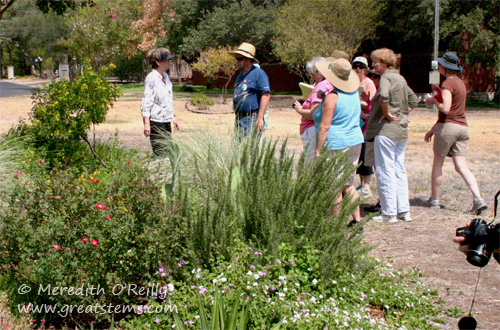 If you are interested in becoming a Habitat Steward,
If you are interested in becoming a Habitat Steward, 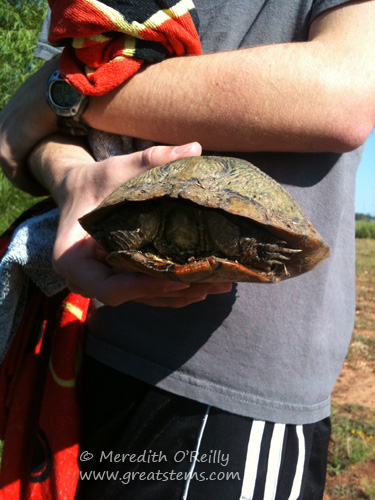 Of course, I hate to create a post without a photo, so I’m sharing one of a turtle we rescued this morning. My teenage son was learning to drive at the time, so let me just say that it was ONE LUCKY TURTLE. Actually, technically at that point I was back in the driver’s seat, but a few minutes earlier it might have been a big splat on the road.
Of course, I hate to create a post without a photo, so I’m sharing one of a turtle we rescued this morning. My teenage son was learning to drive at the time, so let me just say that it was ONE LUCKY TURTLE. Actually, technically at that point I was back in the driver’s seat, but a few minutes earlier it might have been a big splat on the road.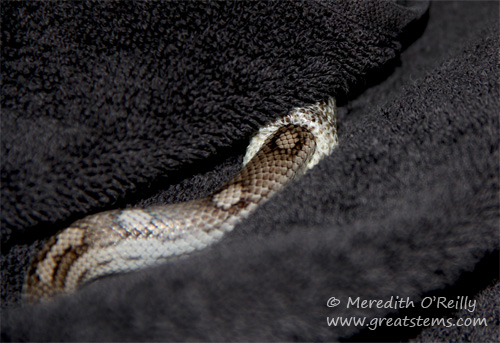 Normally when the snakes shed, they do it in the privacy of their habitat. One day I took the snakes out to feed them, and Morse, a motley-patterned corn snake, started rubbing his cute little head all over the towel I had him on.
Normally when the snakes shed, they do it in the privacy of their habitat. One day I took the snakes out to feed them, and Morse, a motley-patterned corn snake, started rubbing his cute little head all over the towel I had him on.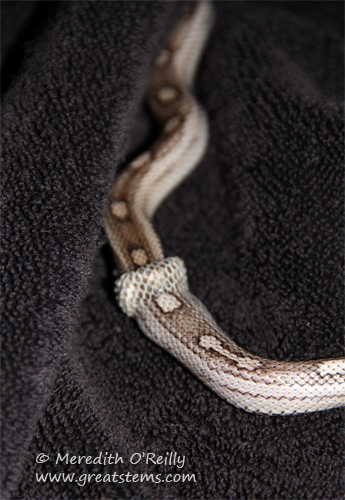 Next thing we knew, we were watching the full shedding process, something I’d never witnessed before. The shed skin rolled off him like old-style stockings, until toward the tail’s end it reversed and extended as Morse pulled away from it. Shedding done, Morse was quite ready to eat!
Next thing we knew, we were watching the full shedding process, something I’d never witnessed before. The shed skin rolled off him like old-style stockings, until toward the tail’s end it reversed and extended as Morse pulled away from it. Shedding done, Morse was quite ready to eat!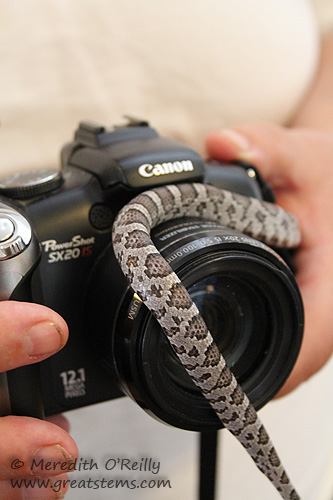 Walker, the corn/rat snake hybrid, has all the expected instincts of a snake, and that makes him great to observe, because he is certainly observing you and everything else. I like to wander around with him so that he can safely explore new things. Though we feed our snakes thawed rodents, he attacks his dead prey with all ferocity. We use tongs so that we are not handling the mice directly, and if I hold onto the end of a mouse for a just a couple of seconds after Walker’s latched on, he quickly coils all around the mouse, constricting it just like all good constrictors do. I have got to videotape it sometime.
Walker, the corn/rat snake hybrid, has all the expected instincts of a snake, and that makes him great to observe, because he is certainly observing you and everything else. I like to wander around with him so that he can safely explore new things. Though we feed our snakes thawed rodents, he attacks his dead prey with all ferocity. We use tongs so that we are not handling the mice directly, and if I hold onto the end of a mouse for a just a couple of seconds after Walker’s latched on, he quickly coils all around the mouse, constricting it just like all good constrictors do. I have got to videotape it sometime.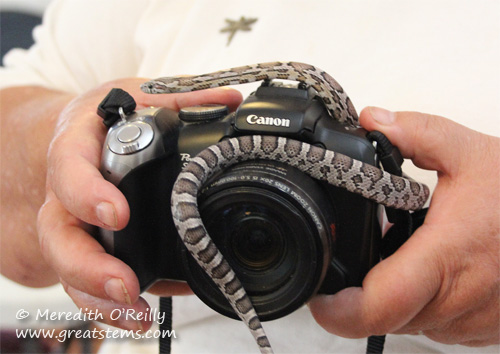 Walker and Morse are destined to be teaching snakes. They had their first classroom visit of sorts at the Master Naturalist training this past spring. Here my friend Christine tried to take a picture of Walker, but of course Walker had other ideas.
Walker and Morse are destined to be teaching snakes. They had their first classroom visit of sorts at the Master Naturalist training this past spring. Here my friend Christine tried to take a picture of Walker, but of course Walker had other ideas.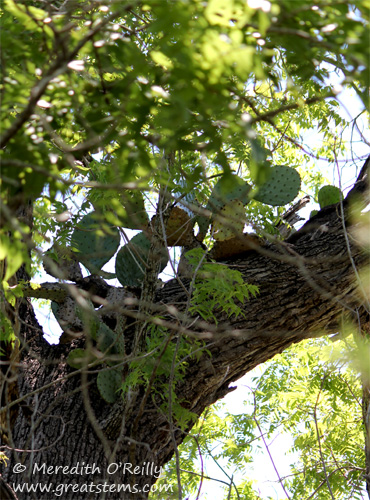
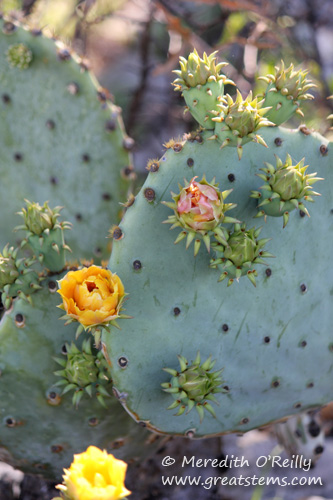
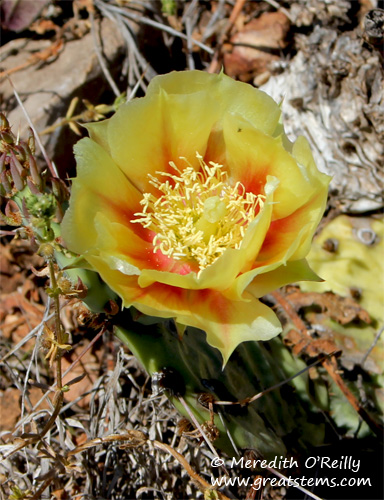
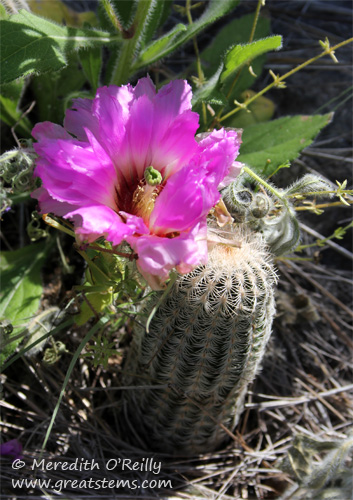
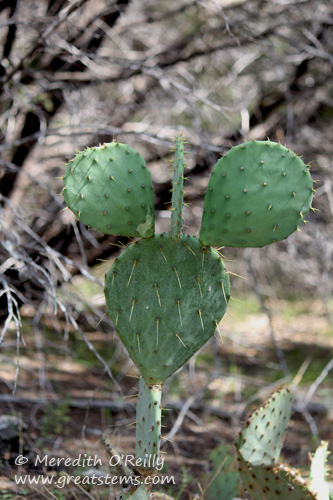
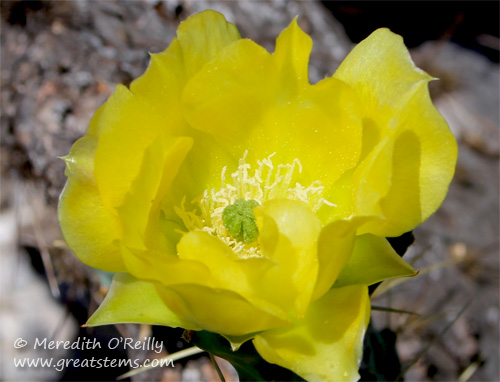
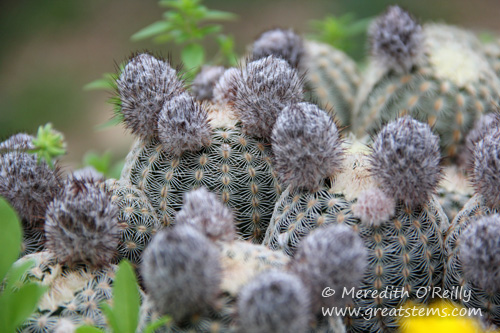
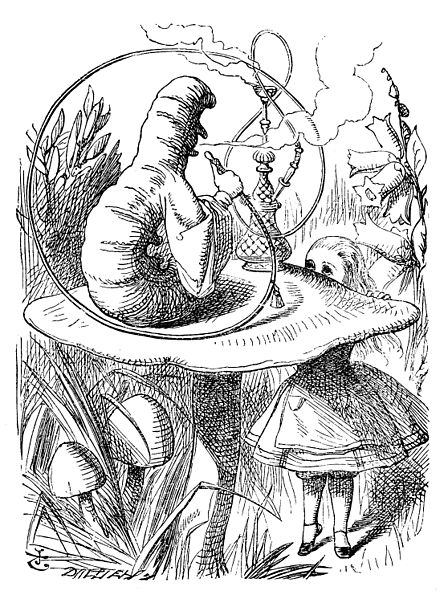
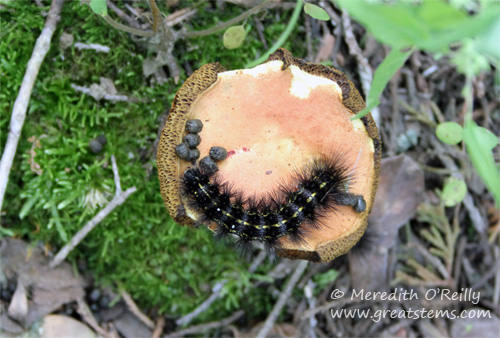 The caterpillar-on-mushroom above was found at
The caterpillar-on-mushroom above was found at 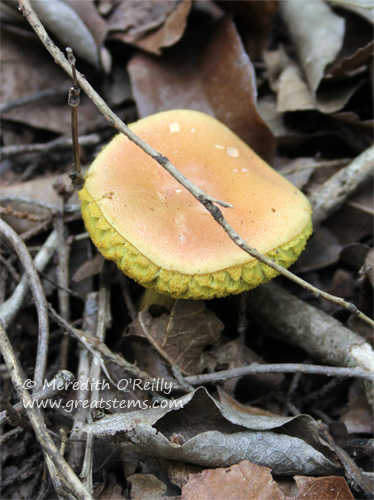
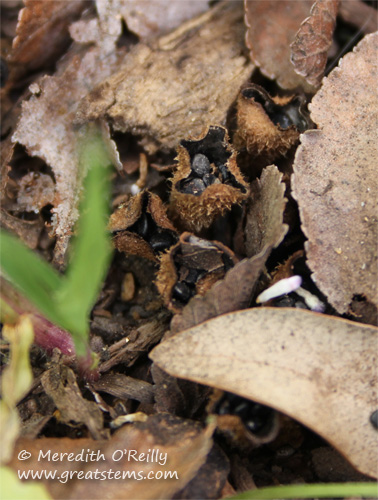
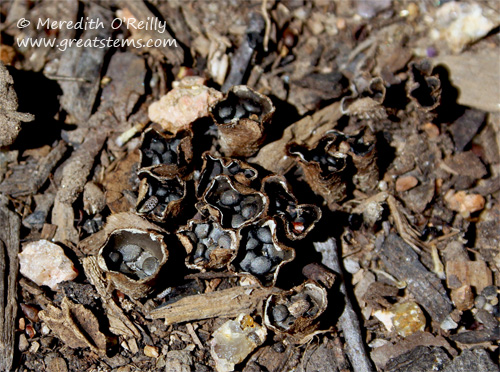
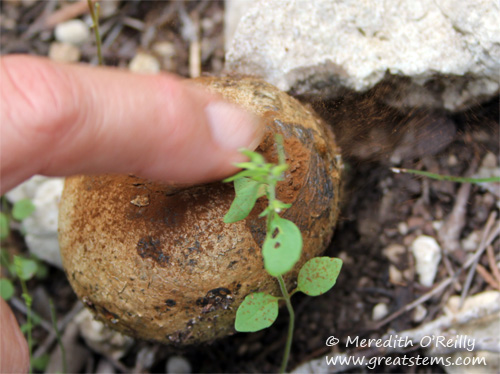
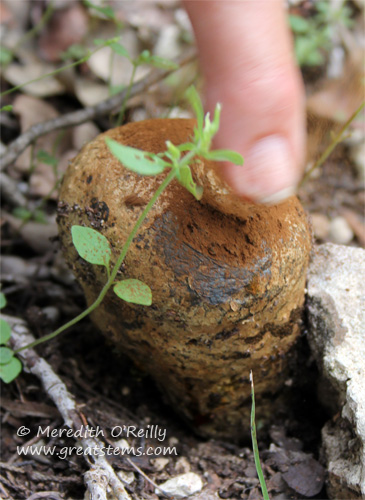
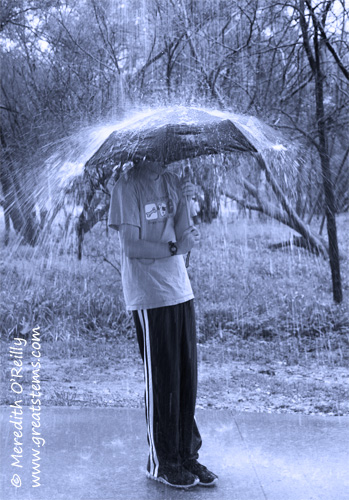
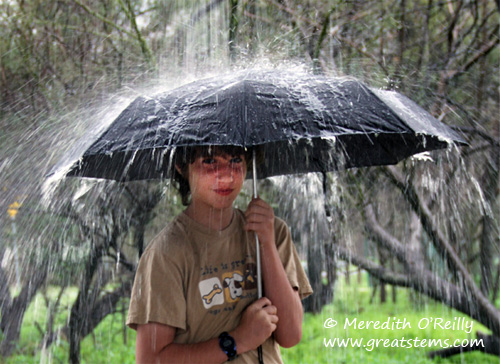
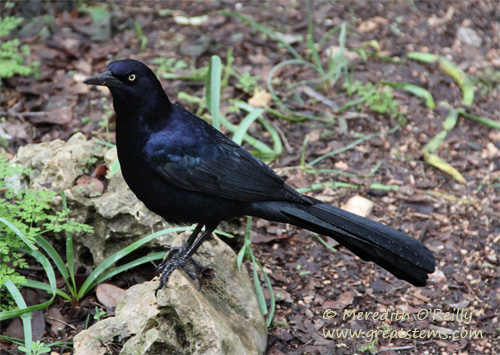 After the festival, Nolan and I toured the
After the festival, Nolan and I toured the 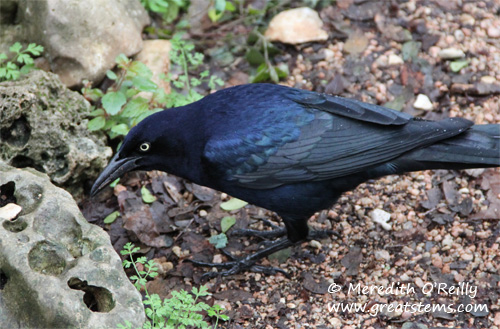
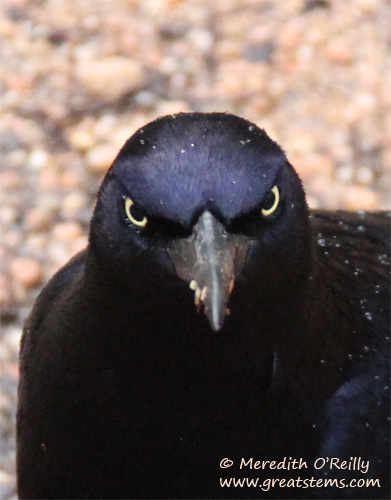
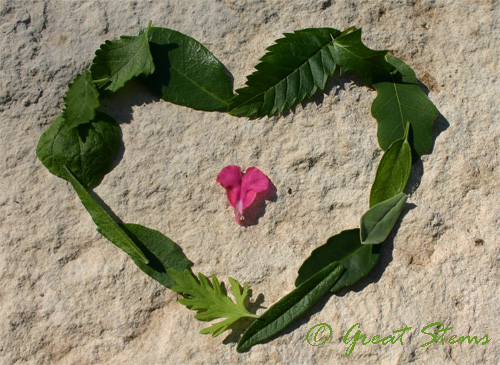
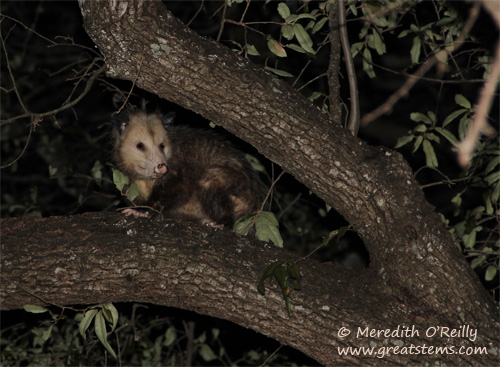 Now there’s a face only a mother could love (well, and me — but then again, I’m technically a mother, so I guess it counts).
Now there’s a face only a mother could love (well, and me — but then again, I’m technically a mother, so I guess it counts).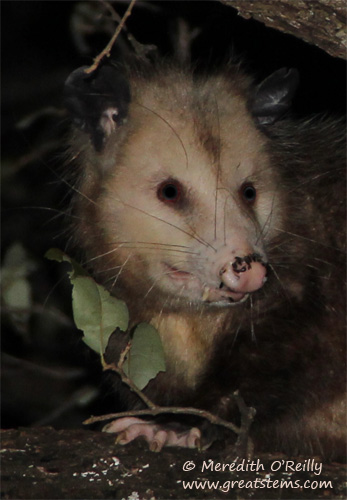
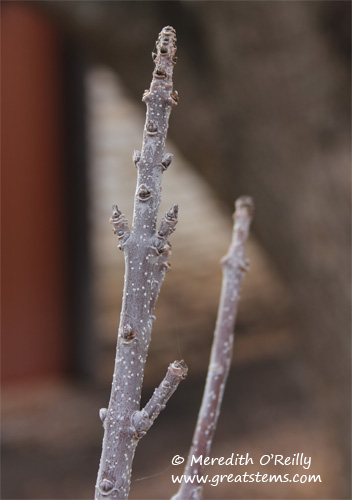 Sticks are not the easiest to take photographs of — and not the easiest to admire in photographs, for that matter. But there is something remarkably fun in having your neighbors walk by as you dig a big hole in the ground and then put in… a stick.
Sticks are not the easiest to take photographs of — and not the easiest to admire in photographs, for that matter. But there is something remarkably fun in having your neighbors walk by as you dig a big hole in the ground and then put in… a stick.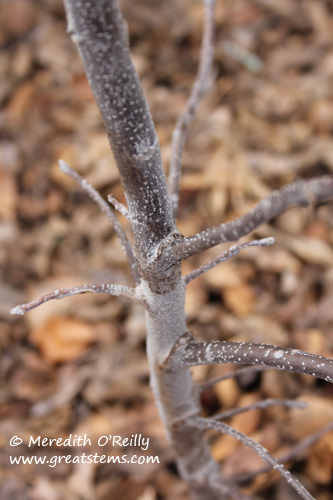
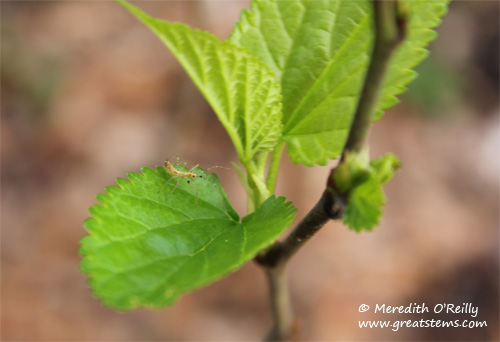
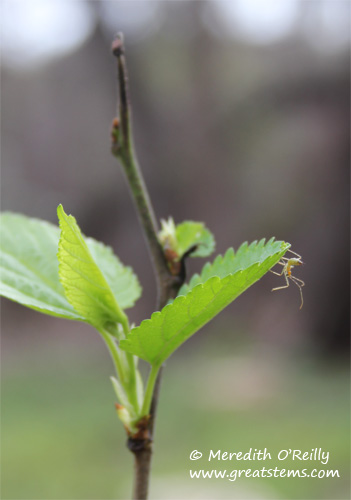 The Red Mulberry already has just a few leaves showing themselves, and a bug nymph stopped by for a visit.
The Red Mulberry already has just a few leaves showing themselves, and a bug nymph stopped by for a visit.